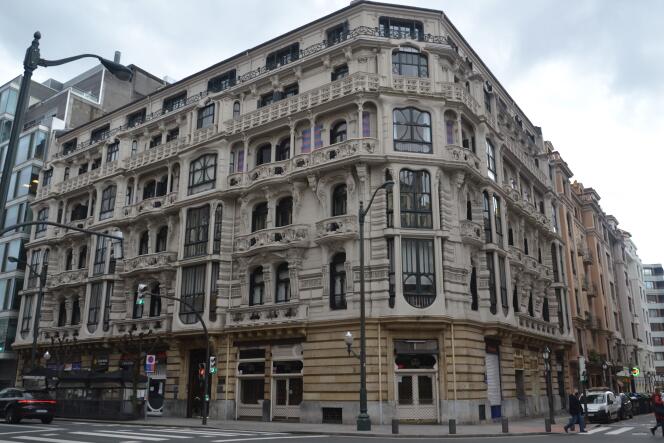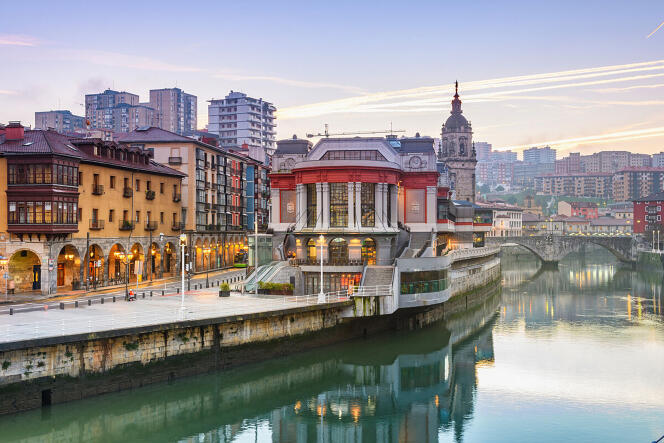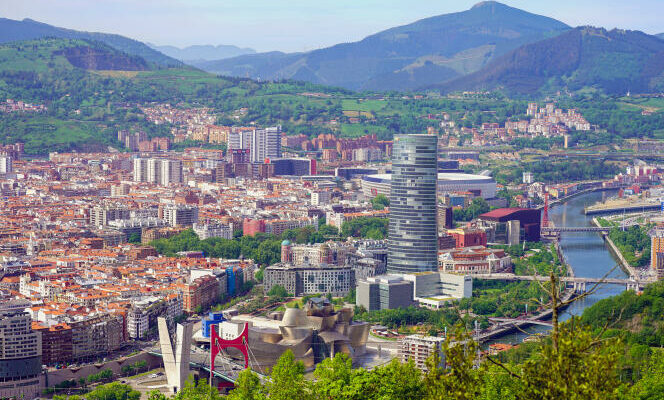The history of Bilbao is closely linked to that of iron mines and their exploitation throughout the 20th century.e century. After the crisis of the 1980s and the closure of shipyards and blast furnaces, the capital of Biscay, in the north of Spain, was able to recover by focusing on culture. A daring bet that we discover along the way as we stroll through the festive and lively neighborhoods of this city looking to the future.
Day 1
9:30 a.m. Artxanda and viewpoint
We walk along the redeveloped banks of the Ria de Bilbao before taking the funicular to the terminus: Mount Artxanda (1). Inaugurated in 1915, it formerly led to the casino and numerous restaurants. Guide Elena Perez says her father-in-law went there to meet people: “There was a censor who separated the boys from the girls if they danced too closely. »
Renovated in 1983, the funicular is still in operation and provides access to one of the most beautiful lookouts in Bilbao. From the Artxanda viewpoint, you can admire the surrounding hills and emblematic buildings, such as the chimney of Etxebarria Park, a vestige of the old steelworks, and the Iberdrola Tower, 165 meters high.
11 a.m. Casa Montero and Art Nouveau

Head for the left bank and the new town. We take the Zubizuri bridge, designed by Santiago Calatrava, to reach the twin towers of the Japanese Arata Isozaki and the Abando district, whose facades of Art Nouveau buildings compete in style, such as the Montero house (2) (1904), Alameda de Recalde street, better known as “Casa Gaudi”, with its decorated balconies and bow windows.
Moyua Square is also a fine example of this eclectic architecture, with the Second Empire style of the Carlton Hotel and the glass subway entrances made by Norman Foster (1997), called here fosteritos. “In the 1960s, the facades were gray, the city was very polluted. After the floods of 1983, an ambitious plan focused on transport and culture changed everything »explains Elena Perez, before heading towards the gardens of Albia and ordering a caldoa soup, under the Mozarabic ceilings of Café Iruña.
12 hours Casco Viejo and pintxos

Change of atmosphere, the main arteries give way to the labyrinth of narrow, cobbled streets of Casco Viejo, the old town. The first pintxos, the Basque variation of tapas, can be enjoyed under the arcades of Plaza Nueva, at the Victor Montes restaurant, one of whose specialties is liver macarons. A few streets away, the Plaza Unamuno (3) is the meeting place for Bilbayans.
You have 65% of this article left to read. The rest is reserved for subscribers.
